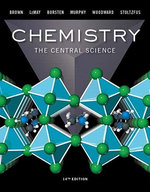?What are the basic SI units for (a) the wavelength of light, (b) the frequency of light, (c) the speed of light?
Chapter 6, Problem 6.13(choose chapter or problem)
What are the basic SI units for
(a) the wavelength of light,
(b) the frequency of light,
(c) the speed of light?
Unfortunately, we don't have that question answered yet. But you can get it answered in just 5 hours by Logging in or Becoming a subscriber.
Becoming a subscriber
Or look for another answer
